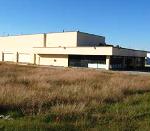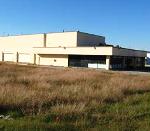
Texas City Turns Brownfields Challenge into Opportunity
- By Lexin Murphy, John Sallman
- Jun 09, 2010
In 2007, the city of Arlington, Texas, received both Hazardous Substances and Petroleum Brownfields Assessment Grants totaling $400,000. With a time limit on spending, the city immediately began working with the U.S. Environmental Protection Agency on the necessary cooperative agreements, quality management and grant work plans to establish its brownfields program.
The EPA grants were the first the city had received and there was a bit of a learning curve involved, resulting in some delay in selecting the final project contractors. During the time that it took to sort out the responsibilities and requirements, the economy began the most severe recession the country has experienced since the Great Depression.
Despite the presence of the new Dallas Cowboys' football stadium, which was opening in mid-2009, interest in property development was at an all-time low. If the city was unable to show evidence of progress in its new brownfields' program, it could lose the grants. Although the outlook was bleak, city leaders implemented an aggressive approach to community outreach to promote their program and turn their hardships into successes.
Arlington leaders established a Brownfields Advisory Committee (BAC) to consider and recommend potential sites and outreach efforts. The committee was finalized in August 2008 and consisted of 14 members representing developers, environmental consultants, a real estate brokers and a few private citizens. BAC suggested the city's brownfields' application and site access agreement forms be posted on Arlington's Website so that interested parties could easily find and submit the forms electronically. The city also updated the site with information about the benefits of participating in the program to spur interest.
BAC also suggested a brownfields flyer, which the city created, that touted the benefits of the brownfields program. The flyer was posted on the site and distributed to:
- brokers working with the city’s Economic Development Department,
- nonprofit organizations partnering with the city,
- real estate brokers representing industrial properties in Arlington, the Arlington library system ─ 150 flyers were delivered for display and handout,
- a Business Development Council meeting of the Arlington Chamber of Commerce, as well as a breakfast meeting for downtown business owners,
- the University of Texas at Arlington’s Finance and Real Estate Program blog, and
- the city’s Economic Development Department, which distributed flyers at its Great Southwest Industrial District Association Board meetings.
In addition, the city mailed a postcard detailing the program to nearly 3,000 commercial property owners in the identified grant target areas. That outreach resulted in 25 phone inquiries. Although most of these were just curious callers, two people expressed interest in the program. One later submitted an application that eventually was approved for assessments using grant funds.
Using city departments ─ Economic Development and the Real Estate Division of Public Works & Transportation ─ Arlington employees networked with parties they met with on a regular basis who were interested in property development. Department representatives would alert potential applicants to the benefits of the brownfields program, sometimes combining the assessment grant funding with other incentives to provide a more comprehensive economic development package.
 Arlington went beyond just letting potential developers know about the program; the city created an inventory of brownfields sites. The city partnered with the University of Texas at Arlington for the initial inventory research before turning the project over to Terracon Consultants, Inc. The inventory, which included candidate sites based on current and historical uses of the properties, is maintained within a Web-based interactive database tied to the city’s Geographic Information System, the local taxing district’s Website and a database of current properties for sale that is updated through the Economic Development Department. Following completion of this resource, the city printed nearly 1,000 brochures that were sent to the property owners of potential brownfields sites identified in the database.
Arlington went beyond just letting potential developers know about the program; the city created an inventory of brownfields sites. The city partnered with the University of Texas at Arlington for the initial inventory research before turning the project over to Terracon Consultants, Inc. The inventory, which included candidate sites based on current and historical uses of the properties, is maintained within a Web-based interactive database tied to the city’s Geographic Information System, the local taxing district’s Website and a database of current properties for sale that is updated through the Economic Development Department. Following completion of this resource, the city printed nearly 1,000 brochures that were sent to the property owners of potential brownfields sites identified in the database.
Finally, the city and its consultant conducted a brownfields workshop, focusing on the use of the Petroleum Assessment Grant funds. The Community Development & Planning and Economic Development departments created a list of developers and real estate companies that work with the city and invited them as well as BAC members and property owners of potentially eligible petroleum sites identified in the brownfields inventory to attend. The workshop provided an opportunity to explain the program, describe eligibility in detail and dispel any myths related to the use of grant funds.
Despite the delayed start and economic challenges, Arlington has completed 23 Phase I environmental site assessments (ESAs), with four additional Phase I ESAs currently in progress. This included 15 Phase I ESAs on sites qualified under the Hazardous Substances Grant and 12 Phase I ESAs (eight completed and four pending) on Petroleum Grant sites. The city also completed 15 Phase II ESAs, with an additional six Phase II ESAs pending. A total of seven Phase III ESAs were accomplished with four additional Phase III ESAs either pending or in progress. Arlington also has brought another consultant on board (Stainback Public/Private Real Estate) to assist with redevelopment planning for high-priority sites. Two redevelopment analyses have been finished with three more in progress. In less than two years, the city has spent the majority of the Hazardous Substance Grant funds, with the remaining funds earmarked for projects in progress or pending. Additionally, following the brownfields workshop, a new site was entered into the Petroleum Assessment Grant Program that allowed the remaining petroleum funds to be earmarked with five months left in the funding cycle.
With its current grant cycle ending in September, Arlington applied for two new grants late last year with a goal of seamlessly continuing the program for another three years. The city earned new Petroleum and Hazardous Substances Assessment Grants that will begin in October. Arlington will be able to ensure the continued achievements of its brownfields program and the ongoing revitalization of the city.
About the Authors
Lexin Murphy is with the city of Arlington Community Development & Planning Department.
John Sallman, P.G., works for Terracon Consultants, Inc.